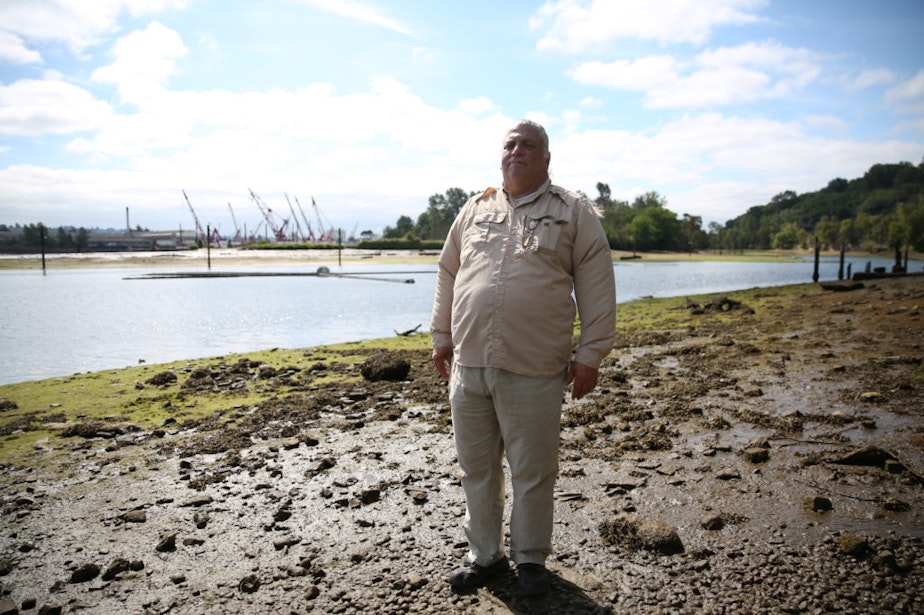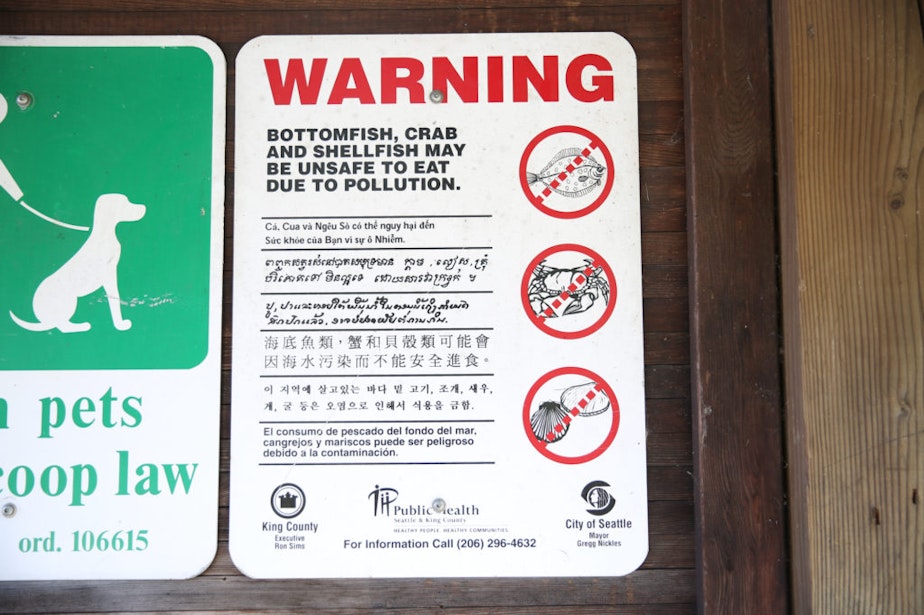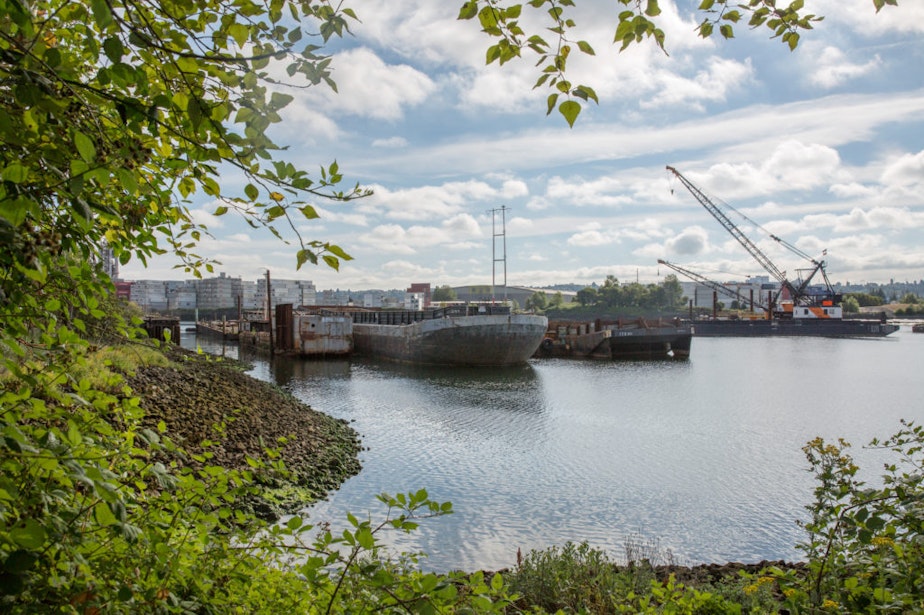The Duwamish isn’t just a river to this lifelong steward – it’s part of his family

James Rasmussen hasn’t spent the past 30 years cleaning Seattle’s Duwamish River because he’s an advocate. He does it because he calls the river his home.
But the Duwamish, which runs from Tukwila into Elliott Bay, is almost invisible to most of the city.
“The majority of people in the city of Seattle don’t even know there’s a river here,” said Rasmussen, the director and coordinator of the Duwamish River Cleanup Coalition. “It wasn’t until last year that they put a sign up there that says you’re crossing the ‘Duwamish Waterway.’ They don’t want to use the word ‘river.’ It’s an obvious slight difference, in the sense that people look at it as a waterway. That’s not a natural thing, but a river is.”
At the mouth of the Duwamish, where Kellogg Island stands between West Seattle and the city’s industrial district, there’s the persistent thumping of jackhammers interrupted only by the blaring horns of passing trains and trucks from nearby roads. Construction cranes and large containers are stacked upon barges, and rusted ships rest along the shoreline. The river flows mostly without being noticed.
“It’s on the back of this river that the wealth of the city was made, and it’s never going back to the way that it was,” Rasmussen said.
Since the beginning of the 20th century, the Duwamish has been heavily polluted by chemicals, runoff and industrial waste oozing from nearby factories — most significantly, cancer-causing polychlorinated biphenyls, or PCBs. In the early 1900s, the city altered the river’s ecosystem dramatically, straightening its winding path and dredging it deeper so that ships could pass through with more ease. Those changes turned the natural river into an industrial estuary.

“I remember coming down here to fish with my dad,” Rasmussen said. “And when I was young, I was taught by my grandfather [that when you] see an animal or a critter, he would say, ‘well, that’s your cousin. The cedar trees, they’re like your grandmother and grandfather.’ And the salmon, that’s very much part of my family.”
The 63-year-old Seattle-native is a member of the Duwamish Tribe and has served on the tribal council for three decades. His mother and grandfather both served before him. Rasmussen believes his family and his tribe date back to this area over 10,000 years.
“We’ve always been here. This is our home. This is the place that was given to us to take care of. We don’t take care of it anymore.”
That’s why Rasmussen has spent years trying to clean and restore the Duwamish, advocating for the interest of the river’s neighboring communities and working as a consultant with government branches like the Environmental Protection Agency. His goal is cleaning up the contaminants in the river as well as making sure there are policies in place to control pollution.
“It doesn’t make any sense to spend $350 million dollars to do a cleanup here, and have it, in the next 15 years, be contaminated again,” he said.

In 2001, Rasmussen helped advocate for EPA’s creation of the Lower Duwamish Waterway Superfund site. With that designation, the five-mile stretch of the river, deemed a Superfund site, it was put on the EPA’s priorities list and received federal funding, including an initial $33 million for cleanup.
Many advocates, like Rasmussen, believe the river has made a lot of progress.
“We see the life coming back,” said Sharon Leishman, manager of the Duwamish Alive Coalition. “When you talk to people who’ve lived here for 60 years, they can tell you they never saw beavers, they never saw herons, they never saw bald eagles. And because of the efforts from the superfund cleanup and a lot residents and government agencies in trying to clean this up and restore native habitat, you can see the river coming back to a very vibrant state.”

But the work is far from over. Leishman and Rasmussen agree the only real way to engage more Seattleites in the river’s restoration is to get them to interact with the river and learn about its history.
“The river is such an important part of the identity of this area. It’s our connection to nature,” Leishman said. “Restoring the health of the river is, I feel, personally a responsibility.”
For Rasmussen, it’s more than identity — it’s life.
“Without a river, there isn’t a people. And without a people, there isn’t a river.”

This story was produced by Min Xian as part of the Next Generation Radio Project, a week-long digital journalism training project designed to give competitively selected participants, who are interested in radio and journalism, the skills and opportunity to report and produce their own multimedia story. Those chosen for the project are paired with a professional journalist who serves as their mentor. KUOW hosted the project in July 2018.

